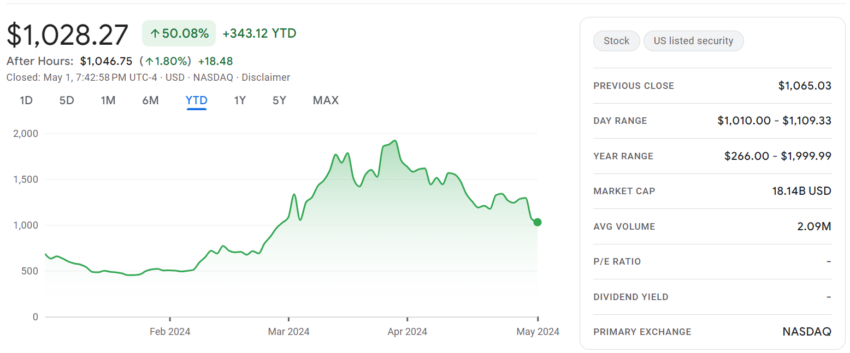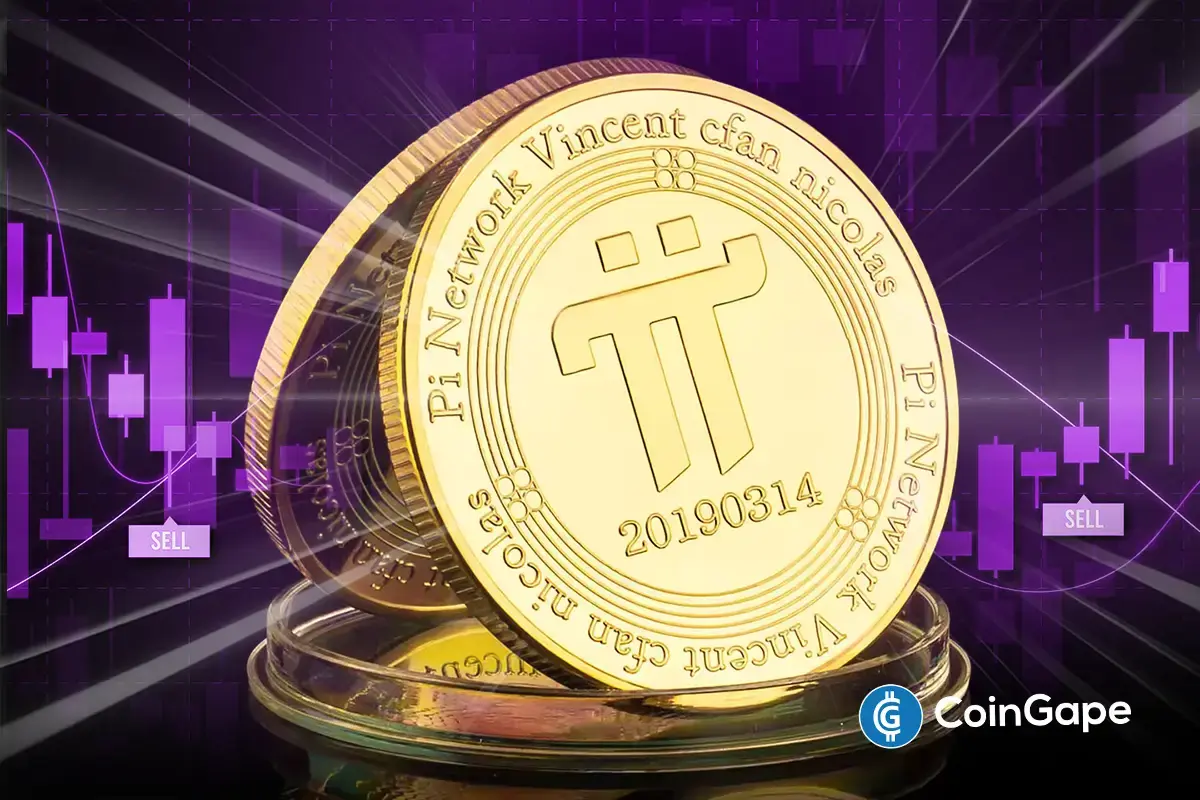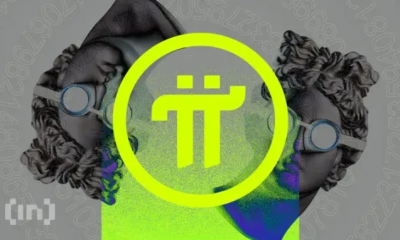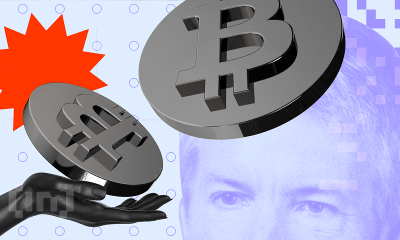Bitcoin
MicroStrategy Introduces Orange: A Bitcoin-Based DID Protocol

MicroStrategy, a US-based business intelligence and software company, has introduced a new decentralized identification protocol named Orange. This innovative protocol was unveiled at the annual MicroStrategy World event in Las Vegas on May 1.
Orange stands out by employing a novel method of using inscriptions as Ordinals on the Bitcoin (BTC) blockchain to store data related to decentralized identities (DID). The protocol utilizes the Segregated Witness (SegWit) feature of Bitcoin. It also enables documents to be created and updated with minimal restrictions on size and content.
Why is MicroStrategy’s Orange Different from Other DID Solutions?
During a segment called “Bitcoin Security,” Michael Saylor, co-founder and Executive Chairman of MicroStrategy, explained the idea behind Orange protocol.
“Our vision is to provide an internet native decentralized digital identity backed by Bitcoin. So, we want to use the open standard of DID, and we want to use the open standard of Bitcoin and put the two together … Why would we use Bitcoin? Well, it is fault tolerance, it is censorship resistance, it does use the most advanced cryptography, it’s a lot better than most people’s taskwork managers and this federated system. It is distributed … It’s open, permisionless, egalitarian, ” Saylor said.
Read more: Decentralized Identity and the Future of Web3: What To Know
Furthermore, Saylor highlighted that the protocol ensures that the decentralized identities are managed efficiently, reducing transaction fees and block space utilization—which are common concerns in blockchain operations. Yet, it is still unclear when MicroStrategy will officially launch the Orange protocol.
Based on the information on their “unofficial draft” on Github, the technological foundation of Orange is based on Bitcoin’s inscription. Orange embeds DID information directly on the blockchain, unlike other DID methods that rely on external data sources or additional dependencies. This method secures data permanence and integrity while enhancing the digital identities’ overall functionality and forward compatibility.
For instance, the Bitcoin Reference DID method (did:btcr) relies on referencing a URL to fetch DID document data. Such reliance can compromise the blockchain’s immutable nature if the URL content changes. In contrast, Orange stores additional data for the DID document directly on-chain.
Additionally, ION (did:ion) requires indexing all the IPFS data pointed to by Bitcoin transactions, which introduces more external dependencies. Orange’s use of taproot script path reveal transactions allows for storing arbitrary amounts of data in the witness of Bitcoin transactions through inscriptions. Therefore, Orange can avoid these dependencies.
Moreover, Orange enhances the security measures by distinguishing between the “wallet keys” used to sign Bitcoin transactions on-chain and the “subject keys” that authenticate the DID subject. This separation allows a third party to manage a DID on behalf of its subject or require multiple signatures. Hence, it offers an extra layer of security and control.
Indeed, while blockchain-based digital identities offer the potential for enhanced verification, privacy concerns remain paramount. Therefore, to gain deeper insights, we consulted Wendy Lopez, Latam Growth Manager at the Bitcoin wallet app – Xvers.
Lopez suggests that recursion or on-chain encryption could play a pivotal role in the development of the Orange protocol. She highlights the unique aspect of Bitcoin—where transparency exists alongside the potential to encrypt sensitive data for privacy protection.
MicroStrategy’s vision of integrating the Orange protocol with social networks and other digital platforms faces potential technical hurdles and user adoption challenges. Lopez points out that fluctuating fees could create a barrier, comparable to the cost of using the platforms themselves. However, she believes that utilizing UTXO and Layer 2 development on Bitcoin (similar to the Runes protocol) could mitigate costs and increase speed.
“For the average user, one day they won’t know they are being verified via blockchain. One day, blockchain will simply be the underlying technology and solve some problems, like verifying a human against AI,” Lopez told BeInCrypto.
Although the promise of a truly decentralized identity is clear, Lopez notes the intrigue surrounding how MicroStrategy will manage large-scale execution. This is given the inherent limitations and costs of on-chain storage in Bitcoin.
Nonetheless, the Orange protocol initiative also demonstrated MicroStrategy’s continuous support and involvement in the Bitcoin ecosystem. Earlier in February, Saylor said the firm was pivoting to a Bitcoin development strategy.
“We view ourselves as a Bitcoin development company. That means we’re going to do everything we can to grow the Bitcoin network,” he said during the company’s fourth-quarter earnings webinar on February 6.
MicroStrategy’s latest Bitcoin acquisition further solidified its long-term vision towards Bitcoin. BeInCrypto reported that MicroStrategy purchased an additional 122 BTC this April, totaling $7.8 million.
The transaction increases MicroStrategy’s holdings to 214,400 BTC, now valued at over $12.35 billion. With its holdings amount, MicroStrategy positions itself as a major player with over 1% of the finite 21 million Bitcoin supply.
Read more: What Is Digital Identity?

However, these positive developments have not yet immediately impacted MicroStrategy’s stock price (MSTR). As of May 1, the closing price of MSTR was $1,065.03. Nevertheless, over a longer time frame, MSTR has been up about 180% this year, rising from $685.15 on January 2 to reaching its peak of $1,919.16 on March 27.
Disclaimer
In adherence to the Trust Project guidelines, BeInCrypto is committed to unbiased, transparent reporting. This news article aims to provide accurate, timely information. However, readers are advised to verify facts independently and consult with a professional before making any decisions based on this content. Please note that our Terms and Conditions, Privacy Policy, and Disclaimers have been updated.
Bitcoin
Is Bitcoin About To Skyrocket Or Crash? What Truflation Says


In the March 27, 2025 analysis, titled “Where is Bitcoin headed next? A Signal hidden in Real-Time Data,” Truflation highlights a recurring phenomenon: each time its inflation index experiences a pronounced downtrend that later pauses or reverses, Bitcoin has tended to surge soon afterward.
Where Is Bitcoin Headed Next?
Truflation’s research points to a backdrop shaped by the aftermath of COVID-19, when central banks worldwide slashed interest rates to almost zero and funneled liquidity into the economy. That period of easy money overlapped with Bitcoin’s run to all-time highs in 2021. By 2022 and 2023, however, persistent inflation took hold, prompting the US Federal Reserve to reverse course. Interest rate hikes and quantitative tightening became the primary tools for fighting price pressures, with the Federal Reserve explicitly aiming to bring consumer price inflation down to 2%.
According to the Truflation report, real-time inflation readings reached as low as 2% in June 2023. The official Consumer Price Index (CPI), published by the Bureau of Labor Statistics, mirrored that pattern about a month and a half later, bottoming out at 3% in July 2023. Yet from mid-2023 onward, Truflation’s index did not simply keep dropping in a straight line. Instead, it oscillated between higher and lower bounds, demonstrating a cyclical pattern of disinflation that would then stabilize or reverse course. Truflation now believes that each of these cyclical “inflection points” closely correlates with subsequent upswings in Bitcoin’s price.
The report references four distinct periods from September 2023 to September 2024 when Truflation’s index trended downward and then either flattened or rebounded. In each of those cases, Bitcoin’s price rose soon after. Truflation suggests that a fifth such event may now be unfolding: the inflation index dropped steeply in early 2025, hitting around 1.30%—a level not seen in several months—before rebounding to 1.80%. This situation is reminiscent of previous disinflation troughs that, based on Truflation’s data, presaged a new wave of Bitcoin buying.
“When Truflation’s disinflation trend pauses or reverses, Bitcoin tends to rally shortly after. This pattern has repeated a few times already — and if history rhymes, it may be unfolding once again soon,’” the analysis states.
The underlying reason, Truflation explains, revolves around Bitcoin’s forward-looking nature and its sensitivity to changes in liquidity conditions. Strong disinflation usually prompts speculation that the Federal Reserve may be done raising rates and could soon turn dovish. While steep and unrelenting disinflation can trigger fears of recession, a slowdown or pause in that disinflation trend often reassures markets that the economy is not sliding into an economic downturn.
This “soft landing” scenario emboldens risk-on sentiment. Traders and investors who believe that inflation has been subdued enough to delay additional tightening—or to accelerate rate cuts—frequently channel their optimism into assets like Bitcoin.
The report acknowledges that no single piece of data, including Truflation’s own, holds absolute sway over an asset as complex and widely traded as Bitcoin. However, it emphasizes that real-time inflation expectations reverberate throughout global markets, influencing equities, commodities, and foreign exchange trading, in addition to crypto. By anticipating shifts in those expectations, some investors may find themselves ahead of the curve when official CPI reports and central bank pronouncements finally confirm or contradict the evolving trend.
“Truflation doesn’t influence Bitcoin in a vacuum. No single data source ever does. But inflation expectations ripple across a wide range of markets — from equities to commodities — and especially into bond yields and forex markets,” the analysis concludes.
At press time, BTC traded at $84,461.

Featured image created with DALL.E, chart from TradingView.com

Editorial Process for bitcoinist is centered on delivering thoroughly researched, accurate, and unbiased content. We uphold strict sourcing standards, and each page undergoes diligent review by our team of top technology experts and seasoned editors. This process ensures the integrity, relevance, and value of our content for our readers.
Bitcoin
Strategic Bitcoin Reserve Proposed by Brazil’s VP Advisor


Brazil’s Vice President Geraldo Alckmin’s (PSB) chief of staff, Pedro Giocondo Guerra, underscored on Wednesday the importance of establishing a national strategic Bitcoin reserve. Guerra was speaking at the swearing-in ceremony of the new president of the FPBC (Parliamentary Front for Competitive Brazil), Deputy Júlio Lopes (PP-RJ), while representing the government of President Luiz Inácio Lula da Silva (PT).
“Rigorously debating the constitution of a sovereign reserve of bitcoin value is in the public interest and will be decisive for our prosperity. After all, Bitcoin is digital gold, the gold of the internet. It’s a technology that allows us to transmit wealth from one end of the planet to the other quickly and store the fruits of our labor efficiently and securely,” Guerra stated.
Will Brazil Get A Strategic Bitcoin Reserve?
His remarks highlighted Bitcoin’s intrinsic appeal—particularly its digital scarcity and deflationary design, in contrast to fiat currencies that can be printed at will. Guerra noted that an official BTC reserve might bolster the country’s resilience and adaptability, especially amid global economic and geopolitical fluctuations.
Notably, Congressman Eros Biondini (PL-MG) has introduced PL 4501/2024, which would permit the creation of a Sovereign Strategic Reserve of Bitcoins—referred to in the bill as RESBit. According to Biondini, the primary goal is to guard Brazil against currency fluctuations and geopolitical uncertainties by diversifying the government’s international reserves.
The text proposes a limit of 5% of the country’s international reserves—which totaled $366 billion in December—for Bitcoin acquisitions. Should it pass, Brazil would be authorized to invest as much as $18.3 billion in Bitcoin, based on the reserve’s valuation at the time the bill was drafted.
Currently under review by Rapporteur Luiz Gastão (PSD-CE) in the Lower House’s Economic Development Committee, the bill sets forth guidelines for gradual acquisition and emphasizes robust security measures, using cold wallets and advanced AI- and blockchain-based monitoring.
The legislation details how the Central Bank and the Ministry of Finance would jointly manage RESBit, ensuring transparency through regular biannual reports to both the public and Congress. In addition, the text addresses the need for educational and innovation programs, including specialized courses on blockchain, crypto-economics, and cybersecurity, as well as incentives like tax benefits for crypto-related startups.
Related Reading: Trump Endorses Pro-Bitcoin Senator Lummis: ‘Make US The Crypto Capital’
A technical advisory committee composed of experts in blockchain, digital economy, and cybersecurity would also be established to ensure rigorous oversight and to foster collaboration with international regulators and research institutions. The proposal cites global precedents, such as El Salvador’s adoption of Bitcoin as legal tender, the United States’ approval of BTC ETFs, China’s investment in blockchain and digital currency efforts, Dubai’s success in developing a blockchain-friendly business environment, and the EU’s regulatory framework for digital assets.
In its justification section, the bill argues that Brazil is already one of the countries with the highest rate of cryptocurrency adoption, yet government policy has not kept pace with the rapid evolution of this market.
According to the text, “The creation of RESBit will allow Brazil to diversify its international reserves, reducing exposure to foreign exchange fluctuations and geopolitical risks while increasing economic resilience. This measure will also position Brazil as a regional leader in financial and technological innovation, attracting external investment and strengthening our presence in the digital economy.”
At press time, BTC traded at $86,205.

Featured image created with DALL.E, chart from TradingView.com

Editorial Process for bitcoinist is centered on delivering thoroughly researched, accurate, and unbiased content. We uphold strict sourcing standards, and each page undergoes diligent review by our team of top technology experts and seasoned editors. This process ensures the integrity, relevance, and value of our content for our readers.
Bitcoin
Bitcoin Bet Grows Bigger: The Blockchain Group Snaps Up 580 BTC


The Blockchain Group, a France-based blockchain solutions firm, recently announced its largest Bitcoin (BTC) purchase to date, acquiring 580 BTC. This marks the company’s third BTC acquisition since it began buying the digital asset in November 2024.
The Blockchain Group Buys 580 Bitcoin
In its most significant BTC acquisition so far, The Blockchain Group has purchased 580 BTC for approximately $50.64 million at an average price of $88,020 per coin. According to the announcement, the purchase was made through its Luxembourg-based subsidiary.
Notably, the acquisition was financed through proceeds raised from a convertible bond issuance announced on March 6. The move aligns with the firm’s Bitcoin Treasury strategy.
To recall, The Blockchain Group made its first BTC purchase in November 2024, acquiring 15 BTC at an average cost of $68,785 per coin. Its second purchase followed in December 2024, when it bought 25 BTC at an average price of roughly $97,692.
Following its latest acquisition, the company’s total BTC holdings now stand at 620 BTC, with a total net asset value of slightly over $54 million at current market prices.
According to data from Yahoo! Finance, The Blockchain Group’s stock (ALTBG.PA) closed today’s trading session at €0.4975 ($0.54), up 3.09% on the day. On a year-to-date basis, the company’s shares have surged by an impressive 65.78%, suggesting that its exposure to BTC has positively impacted its valuation.

The Blockchain Group’s official website states that its pivot to Bitcoin is part of a broader strategy to optimize the use of its excess cash and financial instruments. Since its first BTC acquisition, the company’s stock has risen by 225%.
Corporate BTC Adoption To Grow In 2025
Corporate adoption of Bitcoin is expected to pick up even further in 2025, driven not only by the digital asset’s intrinsic value but also by a favorable regulatory environment under pro-crypto US President Donald Trump’s administration.
Earlier this week, the largest corporate holder of Bitcoin, Strategy, acquired an additional 6,911 coins, pushing its total holdings beyond 500,000 BTC. In the same vein, US-based financial services firm Fold Holdings announced the addition of 475 BTC to its corporate treasury earlier this month.
As corporate adoption grows, several US states have also begun legislative processes to add BTC to their treasuries. For instance, Utah and Kentucky have recently made significant strides with their BTC reserve bills.
Additionally, Mexican billionaire Ricardo Salinas recently revealed that close to 70% of his investment portfolio is allocated to Bitcoin and related assets. At press time, BTC trades at $86,838, down 1.1% in the last 24 hours.

Featured Image from Unsplash.com, charts from Yahoo! Finance and TradingView.com

Editorial Process for bitcoinist is centered on delivering thoroughly researched, accurate, and unbiased content. We uphold strict sourcing standards, and each page undergoes diligent review by our team of top technology experts and seasoned editors. This process ensures the integrity, relevance, and value of our content for our readers.
-

 Market23 hours ago
Market23 hours agoBitcoin Price Stalls at $88K—Can Bulls Overcome Key Resistance?
-

 Market19 hours ago
Market19 hours agoDogecoin (DOGE) Faces Market Correction—Will Buyers Step Back In?
-

 Bitcoin19 hours ago
Bitcoin19 hours agoStrategic Bitcoin Reserve Proposed by Brazil’s VP Advisor
-

 Market18 hours ago
Market18 hours agoTerra’s Crypto Claims Portal Opens Soon: Key Dates and Info
-

 Market17 hours ago
Market17 hours agoXRP Price Slides Slowly—Is a Bigger Drop Coming?
-

 Altcoin17 hours ago
Altcoin17 hours agoWhy Is Pi Network Coin Price Up 5% Despite Altcoins Market Correction?
-

 Market22 hours ago
Market22 hours agoPi Network Integrates With Telegram’s Crypto Wallet
-

 Market21 hours ago
Market21 hours agoEthereum Price Struggles—Is Another Breakdown on The Horizon?
























